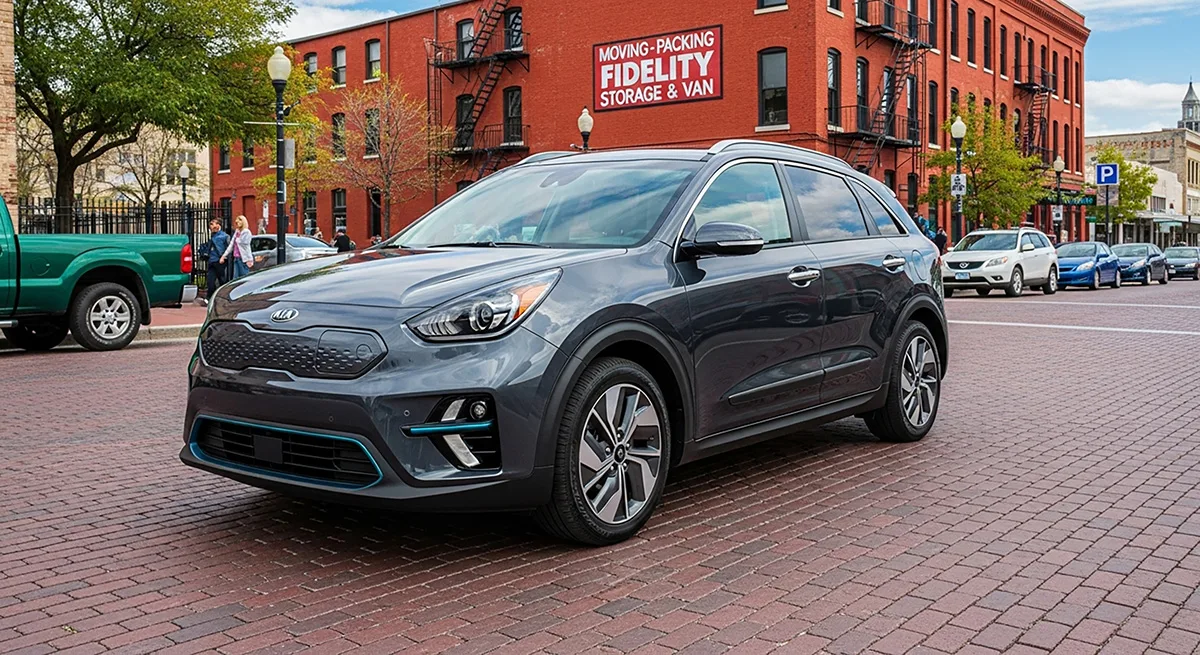If you’ve lived in Omaha for more than one winter, you know the drill.
One day you’re enjoying a beautiful 60-degree October afternoon, and the next morning you’re scraping ice off your windshield while your car struggles to get traction on that sneaky first snowfall.
Sound familiar?
As someone who’s navigated plenty of Nebraska winters, I’ve learned that your choice of tires can make the difference between confidently cruising down Dodge Street and white-knuckling it through every intersection.
Let’s dive into the real differences between winter tires and all-season tires, especially for those of us dealing with Omaha’s unpredictable weather patterns.
In This Post
- The Reality of Omaha Winters
- Breaking Down the Tire Types
- Performance Comparison: Where It Really Matters
- The Temperature Factor: Why 45°F Matters
- Cost Analysis: The Real Numbers
- Who Should Consider Winter Tires in Omaha?
- Installation and Storage: Making It Work
- Local Recommendations
- The Bottom Line
- Sources:

The Reality of Omaha Winters
Here in the Metro, we get a little bit of everything. One week we’re dealing with that infamous Nebraska ice storm that makes walking to your mailbox feel like an extreme sport. The next week, temperatures spike back up to 50 degrees and all that snow turns into a slushy mess that somehow makes driving even trickier.
Our winters typically bring:
- Average temperatures ranging from 15°F to 35°F
- 25-30 inches of snow annually
- Frequent freeze-thaw cycles that create black ice
- Those brutal wind chills that make -10°F feel like -30°F
- Surprise weather changes (because this is Nebraska, after all)
Breaking Down the Tire Types
All-Season Tires: The Nebraska Compromise
All-season tires are like that reliable friend who’s pretty good at everything but doesn’t excel at any one thing. Most vehicles sold in Omaha come equipped with these, and for good reason – they handle our variable conditions reasonably well.
Key Characteristics:
- Rubber compound stays flexible in moderate temperatures (above 45°F)
- Tread pattern designed for wet, dry, and light snow conditions
- Longer tread life compared to winter tires
- Good fuel economy year-round
Winter Tires: The Cold Weather Specialists
Winter tires are like having a 4WD system for each wheel. They’re engineered specifically for the conditions we face from December through March (and sometimes April, let’s be honest).
Key Characteristics:
- Rubber compound remains flexible in temperatures below 45°F
- Deeper tread depth with specialized snow-gripping patterns
- Thousands of tiny “sipes” (small slits) for enhanced ice traction
- Shorter tread life due to softer rubber compound
Performance Comparison: Where It Really Matters
Here’s how these tire types stack up in the conditions we actually face in Omaha:
| Performance Area | All-Season Tires | Winter Tires | Winner for Omaha |
|---|---|---|---|
| Dry pavement (35°F+) | Excellent | Good | All-Season |
| Wet pavement | Very Good | Good | All-Season |
| Light snow (1-3 inches) | Good | Excellent | Winter |
| Heavy snow (4+ inches) | Fair | Excellent | Winter |
| Ice and black ice | Poor | Very Good | Winter |
| Slush | Good | Very Good | Winter |
| Cold weather flexibility | Poor below 45°F | Excellent | Winter |
| Tread life | 60,000-80,000 miles | 25,000-40,000 miles | All-Season |
The Temperature Factor: Why 45°F Matters
Here’s something most Omaha drivers don’t realize: the magic number isn’t 32°F (freezing) – it’s 45°F. That’s when all-season tire rubber starts to harden and lose grip, even on dry pavement.
Temperature Performance Breakdown:
- Above 45°F: All-season tires perform optimally
- 32°F to 45°F: Winter tires begin to outperform all-seasons
- Below 32°F: Winter tires provide significantly better traction and control
Looking at Omaha’s average winter temperatures, we spend most of December through February below that 45°F threshold. Even our “warm” winter days often hover around 35-40°F.
Cost Analysis: The Real Numbers
Let’s talk dollars and cents, because I know that’s what many of you are thinking about:
| Cost Factor | All-Season Tires | Winter Tire Setup |
|---|---|---|
| Initial tire cost (set of 4) | $400-800 | $500-1,000 |
| Additional wheels (optional) | $0 | $300-600 |
| Installation (2x per year) | $0 | $80-120 annually |
| Storage costs | $0 | $0-100 annually |
| Total first year | $400-800 | $880-1,820 |
| Cost per winter season | $0 | $80-220 |
But consider the potential savings:
- Reduced accident risk and insurance claims
- Less wear on all-season tires (they last longer when not used in winter)
- Improved fuel economy due to better traction
- Avoided costs from getting stuck or sliding off the road
Who Should Consider Winter Tires in Omaha?
Winter tires make the most sense if you:
- Drive early morning or late evening when temperatures are lowest and ice is most common
- Have a longer commute especially on highways like I-80, I-480, or US-75
- Live in western Omaha or surrounding areas where snow removal might be less immediate
- Drive an AWD/4WD vehicle (yes, even these benefit from winter tires!)
- Have a low-clearance car that struggles in snow
- Are concerned about safety and want maximum control in winter conditions
You might stick with all-seasons if you:
- Rarely drive in winter weather conditions
- Have a very short commute or work from home
- Are on a tight budget and drive an older vehicle
- Have excellent public transportation options
Installation and Storage: Making It Work
Timing for Omaha:
- Install winter tires: Mid to late November
- Switch back to all-seasons: Late March to early April
Storage Options:
- Many tire shops offer seasonal storage services
- Home storage in garage, basement, or shed
- Stack tires horizontally or hang on wall-mounted racks
- Keep tires clean, dry, and away from direct sunlight
Local Recommendations
Several tire shops around Omaha offer winter tire services:
Popular tire retailers in the metro area typically carry:
- Bridgestone Blizzak (premium option)
- Michelin X-Ice (excellent ice performance)
- Continental WinterContact (good all-around choice)
- General AltiMAX Arctic (budget-friendly)
Pro tip: Many shops run fall promotions in October and November, offering package deals on winter tires and wheels.
The Bottom Line
After several Nebraska winters, here’s my take: if you can afford the initial investment and don’t mind the twice-yearly swap, winter tires are worth it for most Omaha drivers. The improved confidence and safety, especially during our unpredictable weather swings and those inevitable ice storms, make the extra cost worthwhile.
However, good all-season tires from a reputable brand, properly maintained and with adequate tread depth, will still get most drivers through our winters safely – you’ll just need to adjust your driving style and maybe stay home during the worst conditions.
Remember, no tire is magic. Whether you choose all-seasons or winter tires, the most important factors are:
- Maintaining proper tire pressure (check monthly!)
- Ensuring adequate tread depth (replace at 4/32″ for winter driving)
- Adjusting your driving for conditions
- Keeping your vehicle properly maintained
Stay safe out there, Omaha. Our winters might be unpredictable, but with the right preparation, we can handle whatever Mother Nature throws at us – even those surprise April snowstorms that nobody saw coming.
Have you made the switch to winter tires? Share your experience and help fellow Omaha drivers make the best choice for their situation.
Sources:
- National Weather Service Omaha Climate Data https://www.weather.gov/oax/2024climatesummary
- Omaha Snowfall and Weather Averages https://www.currentresults.com/Weather/Nebraska/Places/omaha-snowfall-totals-snow-accumulation-averages.php
- AAA Comprehensive Tire Study Report (2018)
https://newsroom.aaa.com/wp-content/uploads/2019/06/Tire-Study-Report.pdf - Consumer Reports Winter Tire Recommendations
https://www.consumerreports.org/cars/tires/make-sure-your-tires-have-enough-tread-for-winter-a6082176624/ - Kelley Blue Book Winter Tire Cost Analysis
https://www.kbb.com/car-advice/winter-tires-worth-cost/ - AAA 4/32″ Tread Depth Safety Research
https://www.linkedin.com/pulse/when-change-your-tires-aaa-research-shows-432-tread-depth-anthony-avulc - Edmunds Tire Performance Comparison Study
https://www.edmunds.com/car-reviews/features/tire-test-all-season-vs-snow-vs-summer.html - Consumer Reports Winter vs All-Season Tire Comparison
https://www.consumerreports.org/tires/winter-snow-vs-all-season-tires-comparison/







